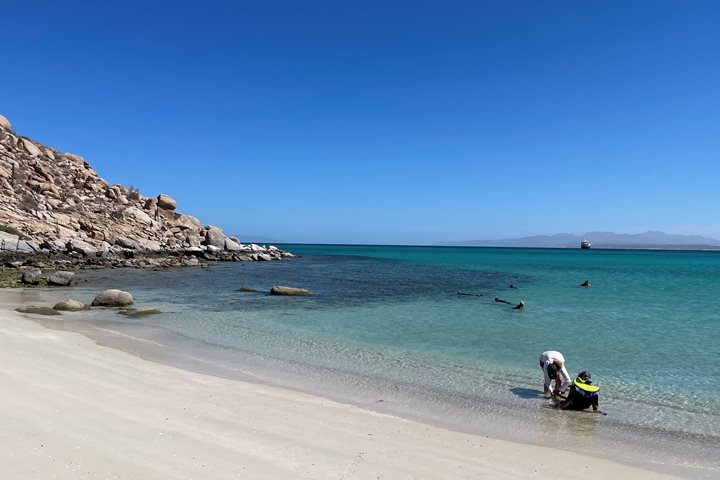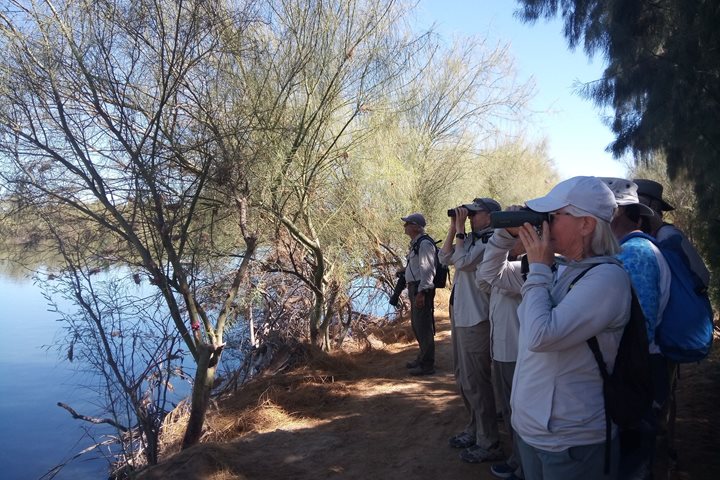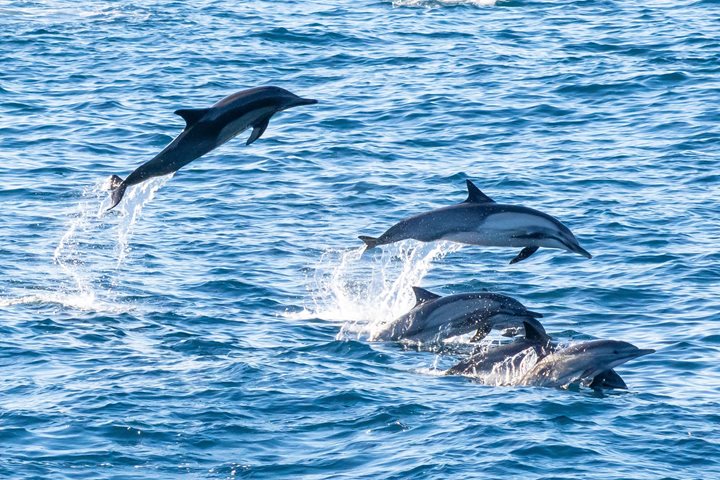It was still quite dark when National Geographic Venture reached the southern flank of San Esteban Island. The dark and early hour did not keep our avid photographers from deploying the Zodiacs to reach shore before dawn.
This island, the third largest of those in the Sea of Cortez’ midriff region, was still plenty dim, but the imposing silhouettes of the cardón cacti could be seen off shore from the moon’s casting. Soon after the beautiful colors of the pre-dawn skies framed our vessel offshore, while the occasional California sea lion could be seen breaking the sea surface. Once ashore, photographers chose a cactus and used the progressively brighter sunrise to create truly exquisite renderings of this area’s flora.
The remainder of the guests came to shore shortly thereafter to explore the island and learn from our naturalists about this bright and brimming desert community. Despite appearances, this is an area pregnant with life and is marked by numerous cacti species, bushes, and trees that make the Sonoran Desert one of the lushest of its kind on this planet.
San Esteban Island is also home to a great variety of reptiles, including several that are endemic to the island. The most famous among those is the San Esteban, or “piebald,” chuckwalla—a large and charismatic iguana which spends most of its time basking in the sun and relying on its remarkable camouflage to go unnoticed.
A few naturalists suited up for a scuba dive, to capture the underwater world at San Esteban for our gathering in the lounge that evening. A number of curious species were observed in this time, including robust gorgonians, sea cucumbers, and sea urchins. A highly uncommon keeled star even managed to make it into the video, as well as a couple of horned sharks.
From San Esteban, we started making our way south, onto the Loreto Bay National Park, where we are going to continue exploring tomorrow Mexico’s beautiful Sea of Cortez.







